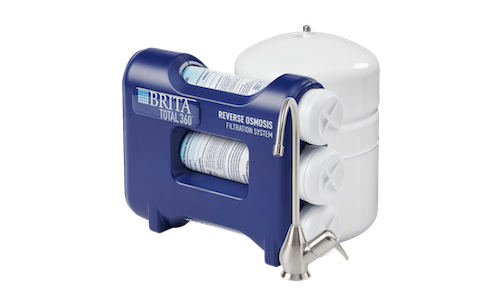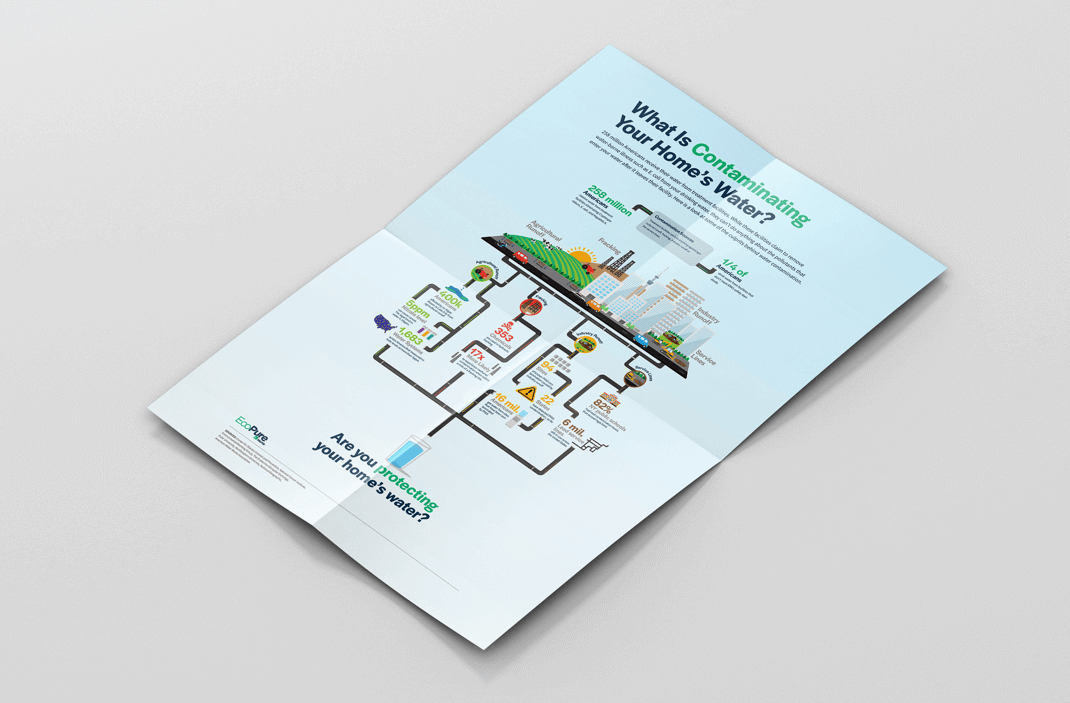What’s Contaminating Your Home’s Water
258 million Americans — nearly 80 percent of the population — receive their water from treatment facilities. While these facilities claim to remove water-borne illnesses such as E. coli from your drinking water, they can’t do anything about the pollutants that enter your water after it leaves their facility. Here is a look at some of the culprits contaminating your home’s water.
What Are the Main Causes of Water Contamination

1. Agricultural Runoff
In 2014, people in Toledo, Ohio were told to steer clear from their water. Approximately 400,000 people couldn’t drink their water for 3 days. The cause of this water crisis was the formation of an algae bloom on Lake Erie.
Nitrates are also a threat to our water supply. They find their way into our water sources when rainfall transports excess fertilizer from crop fields into nearby rivers and lakes.
The EPA’s legal limit for nitrates in water is 10 parts per million (ppm). But a study by the National Cancer Institute discovered that water containing nitrate levels of just 5 ppm could increase the risk of a handful of cancers, including colon, kidney and ovarian.

2. Fracking
There are 137,000 fracking wells across the United States. Many of these wells are sprinkled across the country in the Marcellus Shale (Appalachian Basin), Bakken Shale (North Dakota & Montana), Haynesville Shale (intersection of Arkansas, Louisiana and Texas) and Eagle Ford Shale (Southern Texas).
353 chemicals are used in fracking operations and all of them have the potential of reaching water sources.
In 2011, a Duke University report found that methane contamination was 17 times more likely to appear in areas within a mile of a fracking site. Methane is a colorless and tasteless gas that can occur naturally or through landfills and gas well drilling. Water well owners who live near fracking sites should test their water for this contaminant.


3. Industry Runoff
In 2018, the state of Minnesota settled a lawsuit with the 3M Company and the manufacturing giant paid $850 million in damages. The state claimed 3M had polluted drinking water with PFCs, which is a form of per- and polyfluoroalkyl substances that are known as “PFAS.”
PFAS are a group of man-made chemicals that have been manufactured in a number of industries. PFAS are in packaging materials, stains and other water repellent fabrics, cleaning products and fire-fighting foams. These dangerous “forever chemicals” have been known to interfere with the body’s natural hormones and increase the risk of cancer.
These chemicals affect people through their drinking water. The Environmental Working Group and Northeastern University found that 16 million Americans have received water from sites that have been contaminated with PFAS. Overall, 94 sites in 22 states have reported PFAS contamination.

4. Service Lines
The Safe Water Drinking Act (SWDA) was created in 1974 and last amended in 1996. This law authorizes the EPA to establish the “national health-based standards for drinking water to protect against both naturally-occurring and man-made contaminants that may be found in drinking water.”
It doesn’t require school districts to test drinking water for lead contamination, according to Rhea Suh, the president of the Natural Resource Defense Council (NRDC). In 2016, New York became the first state to test its school district’s water.
The state found that 82% of the 5,000 districts studied had at least one tap that exceeds the state’s lead action level. In New York, the threshold at which action must occur is 15 parts per billion (ppb).
Another big concern with lead leaching into tap water is the number of lead service lines still in use across the country. This became a predominant issue in 1991 when the EPA implemented the lead and copper rule.
At the time of the ruling, the EPA estimated 10 million service lines were in use across the country. Nearly 30 years later, 6.1 million lead service lines are still in use.
This can have detrimental effects on young people and children. According to the Center for Disease Control and Prevention (CDC), “all sources of lead exposure for children should be controlled or eliminated.” They found lead exposure in young adults and children can lead to startling health problems. Lead exposure can lead to behavioral problems and learning disabilities.
Is My Water Contaminated?
There are several steps you can make to ensure your water is safe. The first is discovering if your water is contaminated or not. You can start this by smelling your water. If there’s anything fishy, take action.
However, some contaminants can’t be detected by smell alone. You can reference the Environmental Working Group’s tap water database by simply entering your zip code.
What Should I Do If My Water Is Contaminated?
If you suspect your water is contaminated by agricultural runoff, industry runoff, fracking or lead pipes, you should find a filtration unit for your home’s drinking water. Whirlpool and EcoPure have several filtration systems that can reduce lead and other harmful contaminants from reaching your family.
Do You Have Contaminated Water?
Protect your family from contaminants with a water filtration system.
Shop Now
